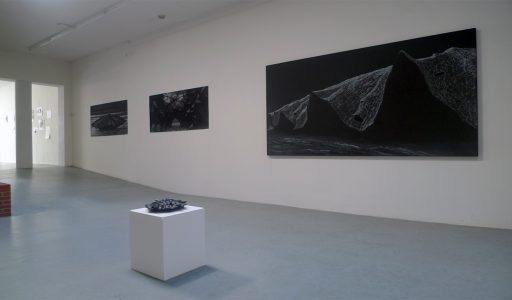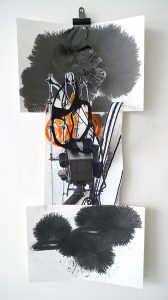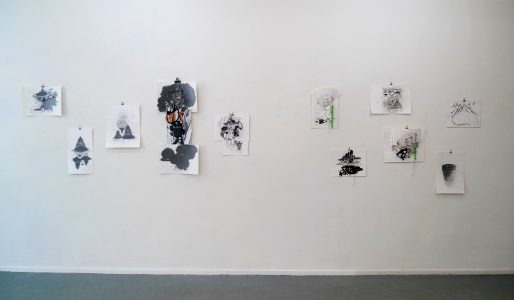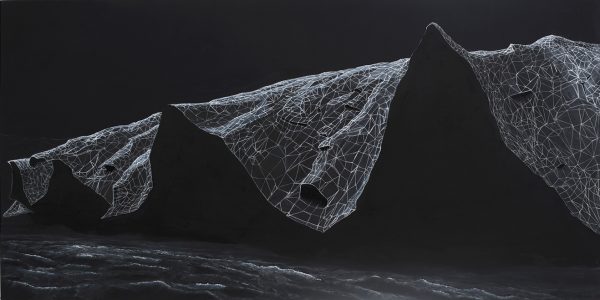Karin van Dam, Sandro Setola
three dimensional drawings, sculpture
27 March – 23 April 2011
Karin van Dam (1959) is known for her installations composed with materials such as buffers for boats, rope and insulating casing, which she sees as spatial drawings. The viewer can walk through the drawing, as it were. End 2009 Karin van Dam worked as an artist in residence in Tokyo; she was immediately intrigued by the fragility of this metropolis, where the sky scrapers are supported by huge springs to make them earthquake-proof. She imagined this as a fine-meshed structure underneath the city, and represented it in small drawings on paper, in which she also incorporated objects such as thimbles, rope, satay sticks and photo fragments. In addition, she had a large number of very detailed street maps partly punched out, which she subsequently wove together and hung on the wall. With the recent television pictures from Japan of the devastated coastal cities this work gets a poignant actuality. In the exhibition also a film will be shown, made in cooperation with Marcel Prins, of an installation Karin van Dam built in the Boijmans van Beuningen Museum in Rotterdam in 2008.
Sandro Setola (1976) shows a series of drawings on a large format, in which a cave-like space recurs in an ever-changing form. The image of the cave has its origin in a very intense dream Setola once had. He calls this space Beachhouse, because it was situated was on the beach directly bordering on the sea. Two drawings are executed in white lines on a jet-black background against which the beachhouse is looming up eerily. Here you are looking at the exterior, the form is reminiscent of a giant shell floating over the breakers of the sea. Other works have been drawn in charcoal on a blue or white background, and show the interior, in which light is shining through crystal-shaped openings on top. It is a natural cave, although it appears to be partly man-made, remotely reminding you of the designs based on crystal structures of the German architect Bruno Taut. As the ultimate realization of his dream image Sandro Setola also had the cave cast in bronze: a shell-shaped model, about 40 cm in diameter, of which the upper half can be lifted up.






